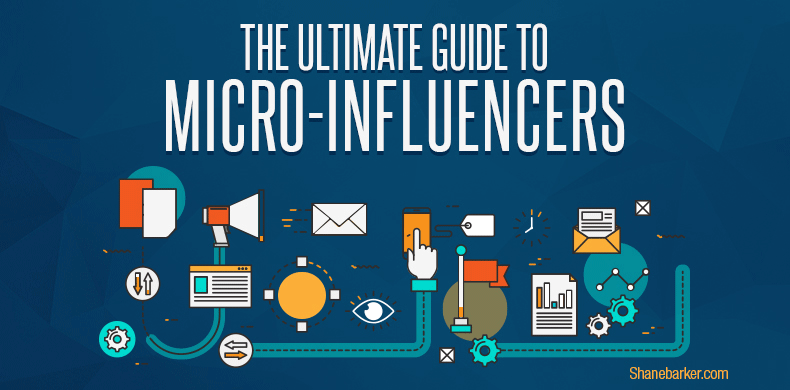According to Amaury Tréguer, Head of Social & Content at Hausmann Group, the recent rise in micro influencer marketing has led to a lack of credibility, transparency, and measurability. However, this only applies to big influencers while the situation is quite different with micro-influencers as made evident by the latest research on the current state of influencer marketing.
Micro-influencers provide unique opportunities for companies to increase their revenues without the need to increase their spending on influencers.
What all this means is that we’ll probably be seeing more and more companies seriously considering micro-influencers in creating lasting business relationships this year.
The State Of Micro Influencer Marketing
Reaching potential consumers today requires a change in marketing strategies. While companies previously relied on celebrities to increase brand awareness, in today’s online world, things are a bit different. Social media has brought massive changes in marketing with influencers on platforms such as Instagram and YouTube becoming of major importance for brands. And while plain logic would suggest the more popular the influencer, the bigger the chance of reaching a larger audience, it turns out things are not always what they seem.
Take, for instance, a survey recently conducted by Markerly which found that once a social media influencer gets a huge number of followers, the rate of engagement with followers decreases.
The survey’s main findings were that Instagram users with less than 1.000 followers received likes on their posts 8% of the time while those with 10 million+ followers received likes only 1.6% of the time. The situation was similar with comment frequency.
Finding The Perfect Influencer Made Easy
 The Markerly findings has determined the “sweet spot” for maximum impact. According to Markerly, influencer in the 10.000 to 100.000 follower range offer the best combination of audience engagement and broad reach. The reason for this being that you still get to reach a large audience while knowing at the same time that this audience is in-tune with your influence.
The Markerly findings has determined the “sweet spot” for maximum impact. According to Markerly, influencer in the 10.000 to 100.000 follower range offer the best combination of audience engagement and broad reach. The reason for this being that you still get to reach a large audience while knowing at the same time that this audience is in-tune with your influence.
Sarah Ware, CEO, and co-founder of Markerly explains why this is the case. If, say, a sportswear company collaborates with a celebrity with 2 million followers, chances are they will reach a large audience but it may turn out that 90% of them are not sports fans.
On the other hand, collaborating with around 100 self-proclaimed athletes is more likely to connect your brand with sports fans as these influencers tend to attract like-minded people. These influencers also happen to be more engaged with their fan base than most celebrities.
Will It Pay Off?
But while all these statistics seem promising, marketers need to know if investing in micro influencer marketing will pay off in the end. According to a study funded by Experticity, micro-influencers drive buying behavior at much higher rates than was previously thought.
According to the study’s findings, micro-influencers had up to 22.2 times more conversations about what to buy than the average consumer. Furthermore, 82% of consumers stated that they were likely to follow product recommendations that were made by a micro-influencer.
Consumers stated that they saw influencers as having a greater impact and being more reliable than the average person due to their higher following and experience. Consumers also found micro-influencers to be better at explaining the characteristics of a certain product which made decision-making on what to purchase much easier.
Why Are Micro-Influencers So Popular?
 As AmauryTréguer explains it in his article for Marketing mag, micro-influencers are seen as a more trustworthy and authentic source of information which leads to a higher level of audience engagement.
As AmauryTréguer explains it in his article for Marketing mag, micro-influencers are seen as a more trustworthy and authentic source of information which leads to a higher level of audience engagement.
Micro-influencers have also worked hard to make a name for themselves and are naturally picky about who they choose to work with as selling out is considered a hazard to their credibility. This is why companies reaching out to influencers will need to choose the influencers carefully. Thankfully, platforms like ProvenSEO and similar offer marketing and content services that make choosing an influencer much easier. However, even if brands make bad choices regarding who they choose to collaborate with, chances are they won’t be losing much as most micro-influencers cost a fraction of what a celebrity influencer would cost.
Some even prefer offering sponsored content for free samples of a product as their goal may be to build more online presence rather than earn money through endorsements.
Also see: 9 Best Successful Influencer Marketing Trends of 2017
Conclusion
Micro Influencer Marketing may not be all that new, but it has certainly experienced a boom in the past decade thanks to the growing popularity of social media. And while brands previously relied on big names to help market their products, surveys and studies on today’s marketing trends show that most consumers trust micro-influencers more than they do anyone else.
Micro-influencers also tend to attract a following of like-minded individuals, thus building an audience that’s easy to target. As things currently stand, most companies today will benefit greatly by engaging with micro-influencer for the aforementioned reasons but also because they get to spend less on marketing campaigns.




